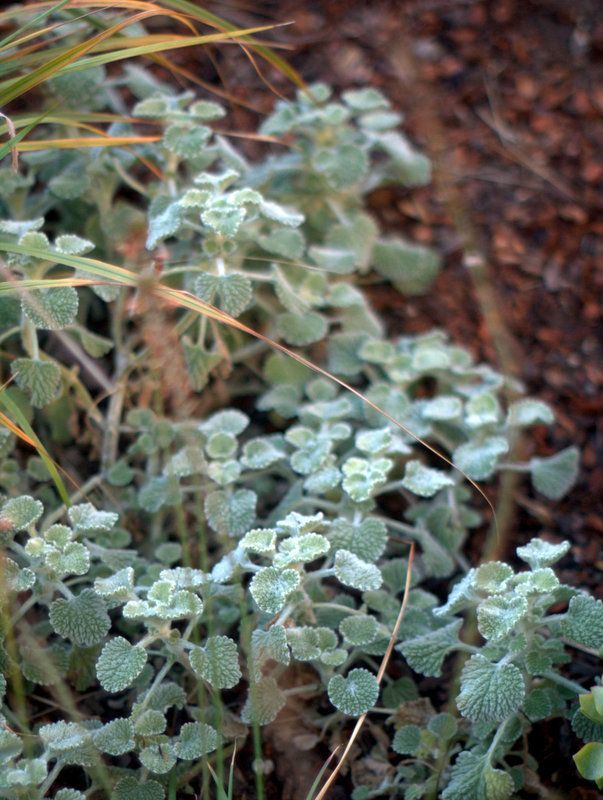
Winter light and winter shadows naturally fill my thoughts this time of year. This marrubium is lucky to be in full sun all year. Some of the silvers are trapped during winter in a band of shade that descends on the back, south-facing garden. The sun’s low position, surrounding houses, and an 8-foot tall southern garden wall are all contributors to the winter shadow that bisects the garden running its length east to west. Sideritis, Convolvulus cneorum, ozothamnus and other sun lovers spend the short winter days in complete shade courtesy of that low-slung sun, while I anxiously await confirmation of their survival in spring. Taller plants will be grazed by the sun for short periods during the day, but plants under a foot tall are effectively in dormancy, whether they want it or not.
Not at all optimal conditions for sun-loving, dry garden plants.
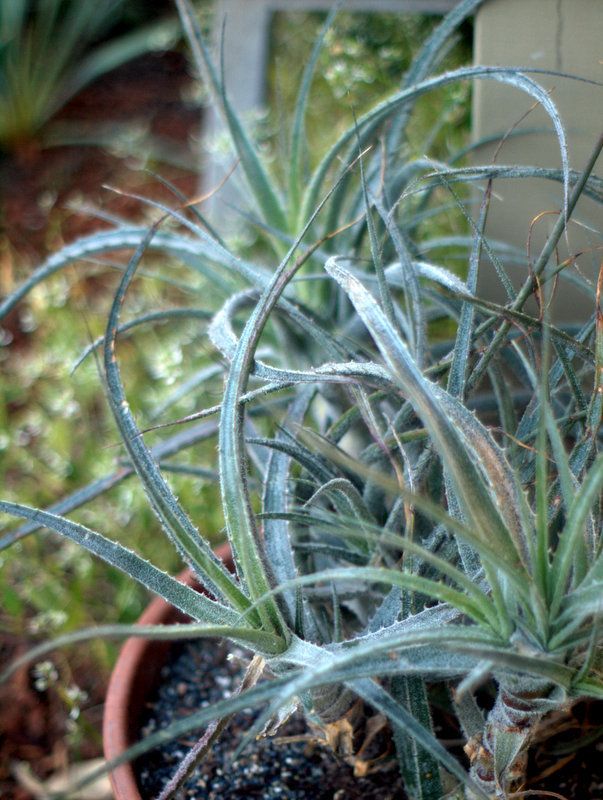
I can help potted silvers like this Puya laxa by moving them to the sunniest spots in the garden.
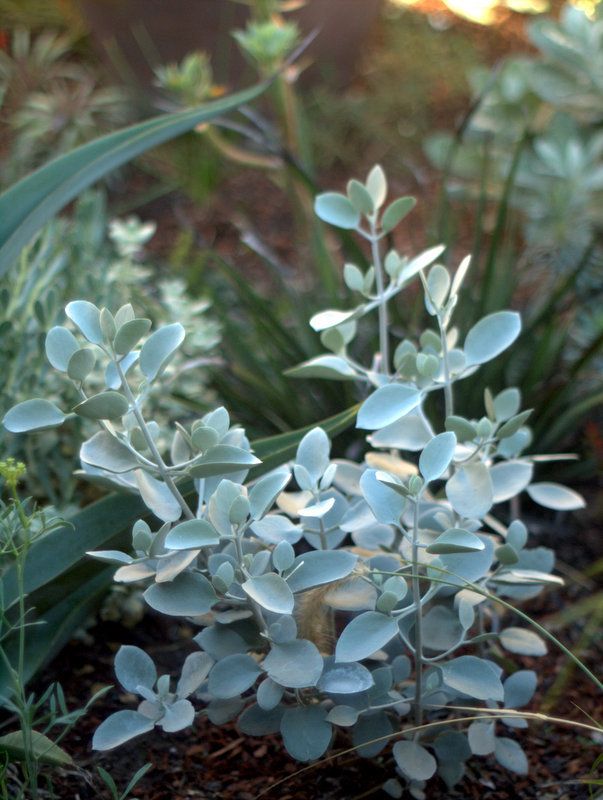
But those in the ground are on their own. This silver straddles the sun/shade band. When this kalanchoe blooms I’ll know whether it’s bracteata (chartreuse blooms) or hildebrandtii (red blooms)
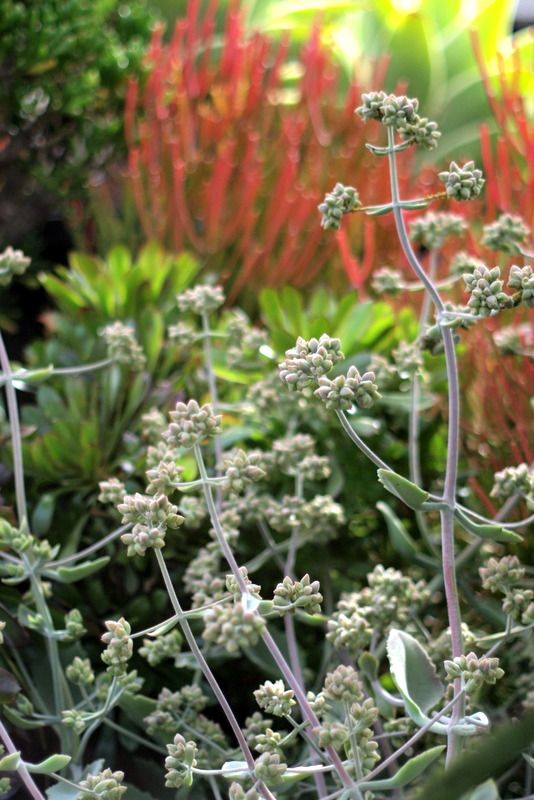
An old photo of bloom trusses on Kalanchoe ‘Oak Leaf’ (Kalanchoe beharensis x K. millotii) shows what these shrubby, winter-blooming succulents can do in January. I have this plant crammed into a mixed pot and need to get it into the garden or I’ll never see that kind of performance — but there’s not a bit of sunny real estate available.
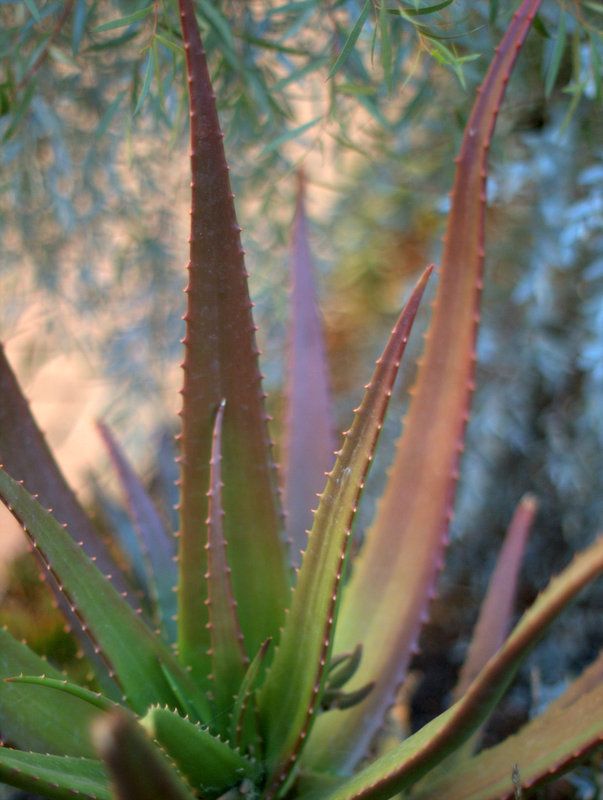
That band of winter shade effectively halves available space for sun lovers. Year-round full sun ensures Aloe cameronii gets that ruddy winter coat and throws those blooms that are now forming.

The slanted light makes a sun pit under the pergola, so here is where some of the smaller pots are congregating.
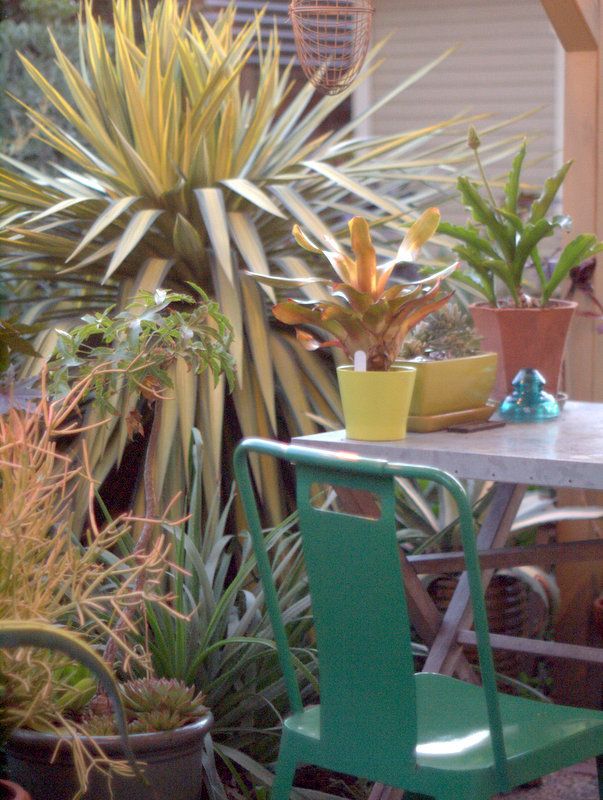
Last year we kept a table and chairs here. That yucca was removed this summer, along with the scratchy Eryngium padanifolium.

Agave ‘Stained Glass,’ in that heavy tank, is immovable in any case, but gets good sun year-round here. Now that the yucca is gone, there’s lots more light and air circulation for the plantings around the pergola.

Even bromeliads are basking in winter’s brand of full sun, much weaker than summer’s. This Neoregelia carolinae can be seen on the table in the photo above from 2014.
I’m counting the days to the winter solstice on December 22, when this band of shade will start to thin and then disappear until next winter. Even after 20 years I still get a little too happy with spring planting and plonk full-sun plants into this winter shade zone.
When I used to experiment with more herbaceous stuff that died back in winter, I theorized that full winter shade enforced the dormancy they craved. When I grew roses, many of them had to put up with this winter shade. I’m still not sure about that theory of enforced dormancy, but there’s very little in the garden that dies back completely anymore. Somewhat reassuring is knowing that in colder climates, lots of sun-loving, tender plants are hustled indoors into low light levels for winter and make it to spring.
Still, in a mediterranean climate like Los Angeles, winter is the time for active plant growth, not snoozing in the shade.

My marrubium didn’t last long – I blamed stingy watering in its infancy but maybe the limited sun exposure was the culprit. Winter shadows have led me to question some of my own choices with respect to plant placement. I’ve been shifting the plant selection in the south side garden to succulents but, even with the Eucalyptus that once dominated the area long gone, it’s not getting much sun right now – the giant toyon limits light almost as effectively as a wall.
More great plants. I love the felty leaves of Marrubium. I can grow M. rotundifolium here in my wet winter-humid summer zone 6 garden for a couple of years before the moisture does it in, but those trailing felty leaves are so beautiful. Love that Kalanchoe, too, and your succulent congregation on the table brought a big smile to my face.
An interesting problem I’ve never really considered — always just assumed that all plants in year-round climates were happy in winter. I have a similar problem in that my most protected (warmest) spot is of course along the south side of the house, but in winter it never sees sunlight. Bakes in summer, but neighbor’s house shades it this time of year. I always forget that days start lengthening so early in winter — something to look forward to!
@Kris, the marrubium and ballota are both looking fine right now. I hope your ballota made it to winter, because it looks terrible as a young plant but really takes off in fall/winter. I wonder if you left the stump of that euc or pulled the whole tree. We got the most amazing fungi blooming out of our euc stump, sometimes kinda scary!
@Tim, I love the felty leaves too. A couple verbascum seem to be holding on for spring but I lost a few others. Those little pots make me smile too, tucked in dry and sunny!
@Alan, yes, that summer sun/winter shade, And then our neighbors’ houses, trees, etc, makes for canyon effects too.
My back garden is in almost complete open shade from October til the leaves drop from all surrounding trees-primarily neighbors trees. When finances allow, will have my hated Liquidambar taken down which will at least provide me with morning sun. I bought a Ballota at Digging Dog in October with only vague thoughts of it’s placement.
Lovely combinations, and I share your lament over lack of winter sun! I get almost no sun at all in my winter garden here, both front and back, so the sun-lovers go into client’s gardens, not my own. I’ve learned to roll with it and enjoy it as a shady cloudforest garden, which I barely even spend time in over winter, I don’t like feeling cold, and prefer to enjoy looking at it from indoors, or from my second story balcony which does still get winter sun.
My issue with plant losses in winter shade are exacerbated by too much winter wet, things just don’t dry out. I’ve learned over the years to elevate my Vrieseas in winter, and tip out collected water from cups of tank bromeliads that aren’t as cold hardy.
Shade or not, a treat for the eyes if not for the plants. That Yucca was getting scary.
I don’t have much shade in any season–good in the winter, but summer is vicious. My Ballotas are petite but happy, happy.
Of course, I actually like the big yucca! But I like the small potted cacti / succulents all nestled in together…I need to do that somewhere.